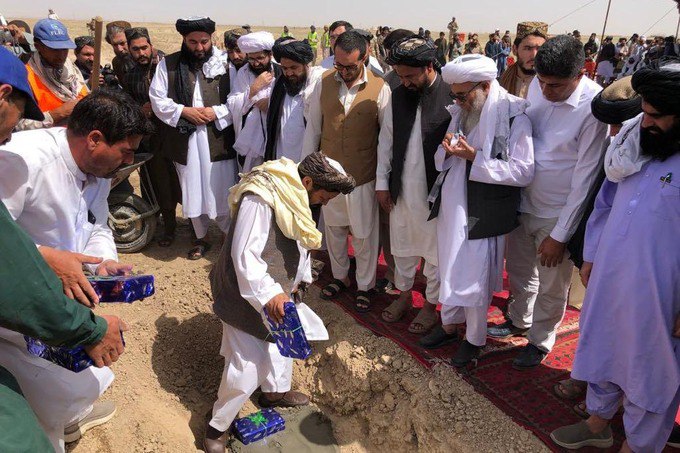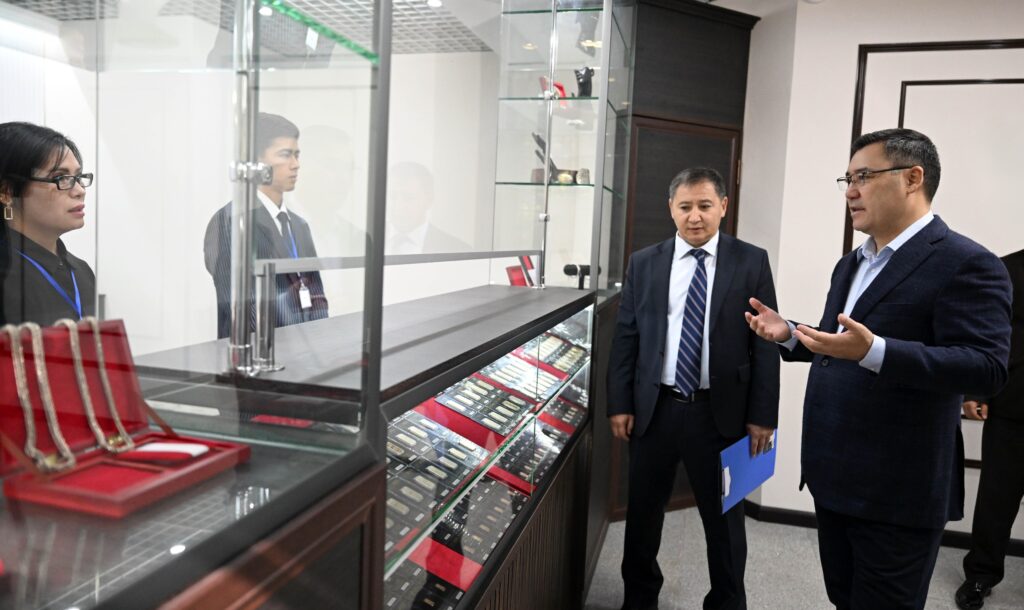BISHKEK (TCA) — Many Kyrgyzstanis are not happy with the current economic situation in their country, and the latest statistical data prove that. According to the National Statistical Committee, the country’s GDP lowered 0.2% over the first seven months of 2018. The state budget deficit is growing, as the state spends more than it earns.
Government’s expectations
Geopolitical tensions and uncertainty in the stock market, including the decline in world trade, as well as sanctions against Kyrgyzstan’s strategic partner Russia affect Kyrgyzstan’s economic development, Kyrgyz Economy Minister Oleg Pankratov said at the Government meeting on August 28.
But the Government’s expectations are optimistic. According to the Economy Minister, the current economic development situation corresponds to the forecast. “We expect that September will be the last month of the economic downturn,” Pankratov said.
The economic decline was mainly due to the gold production cycle at the Kumtor mine, whose plan foresaw a decline in production in the first half of 2018, as well as the fact that the bulk of gold will be produced in the fourth quarter of 2018.
“When forecasting, this factor was initially taken into account and monitored by the Government,” the minister said.
Prime Minister of Kyrgyzstan Mukhammedkaly Abylgaziev is also full of optimism.
In Kyrgyzstan, the national currency is stable, and there is growth in many sectors of the economy, except for industry, he said. Since the beginning of the year, the state budget has received more than 50 billion soms in taxes. Exports to Russia grew by 22%, to Kazakhstan — by 16%, and to Uzbekistan — by 10%.
Unsolved problems
At the same time, the Prime Minister admitted that the country has many unsolved problems, including land transformation (people cannot get documents to build houses), citizens’ access to social services, and tasks in the energy sector.
The number of non-working enterprises is not decreasing. Currently, 38 plants are idle, the Economy Minister said.
Given sufficient resources for the development of agriculture, there is no significant increase in the production of crops and livestock.
Deficiency of mineral fertilizers is a big problem. Farmers are provided with only 30% of fertilizers they need. The Government does not pay enough attention to the intensity of agricultural production. For example, potato yield is 16.8 tons per hectare in Kyrgyzstan, while it is much more in other Eurasian Economic Union member countries (22 tons in Belarus and 21.5 tons in Armenia).
The poor breeding and low productivity of livestock hinder growth. In Kyrgyzstan, the average cow milk yield is 1127 kilograms per year, while in neighboring Kazakhstan it is 2530 kilograms, in Russia — 3118 kilograms, and in Belarus — 5100 kilograms.
The share of processing of agricultural products in recent years did not exceed 12-15%, and the rest is exported as raw products.
Investments
Minister Pankratov noted the low investment activity in the country and increased outflow of foreign direct investment (FDI). Over the first quarter of 2018, the FDI outflow was $247 million, which is twice the FDI total inflow ($118.7 million).
Kyrgyzstan should change its attitude toward potential investors, the Economy Minister believes.
Direct investments go to the capital, Bishkek, and the country’s regions hardly develop.
Since the beginning of the year, loans to the country’s economy have increased by 10.5%. The Russian-Kyrgyz Development Fund is among the main investors of the country but its capital cannot cover all the needs in Kyrgyzstan.
Dependence on Kumtor
According to the Economy Minister, the main reason for the economic downturn for the reporting period is the high degree of dependence of the national economy on the Kumtor gold mine operation.
Gold production at Kumtor has significantly reduced, and the Kumtor Gold Company will produce less gold in 2018 than last year. Since the beginning of the year, gold production at Kumtor has decreased by 30.8%, Pankratov said.
Despite this, the economy should grow by 2.8% by the yearend, the minister said.
“Taking into account Kumtor’s planned gold production, this indicator should be achieved,” he added.
It is necessary to avoid this dependence, and the Government is facing this problem for years, with high hopes on domestic business. The share of small and medium businesses should be increased to 50% by 2023 (currently 39.3%).
Kumtor, the largest gold mine in Central Asia, is located in Kyrgyzstan’s Tien Shan mountains at an altitude of 4,000 meters above sea level in a permafrost zone. Canada-based Centerra owns 100% of the Kumtor mine through its wholly owned subsidiary Kumtor Gold Company. The Kyrgyz Republic holds 33% shares in Centerra through the state gold company KyrgyzAltyn.
KGC is the largest taxpayer and largest employer in the private sector of the country. Kumtor’s share in GDP is 9.3% and in the total industrial volume — almost 40%.
According to Ulan Ryskulov, Chairman of the State Committee for Industry, Energy and Subsoil Use of Kyrgyzstan, seven deposits with a total reserve of 250 tons of gold could reimburse Kumtor’s output.
The Kumtor mine has to work for another six years, and its reserves are about 95 tons of gold.
This year, the Kichi Chaarat gold mining company plans to launch the Kuru-Tegerek deposit. Next year it is planned to launch production at the Jerooy deposit (100 tons of gold reserves), with the creation of about a thousand jobs.
By 2021, it is planned to launch the other gold mines including the Chaarat deposit (gold reserves at about 80 tons), Shiraljin (about 3 tons), Terek-Terekan Perevalnoye (17 tons), Buchuk (12 tons), and Shambesai (7 tons).
These mines could altogether create as many workplaces as at Kumtor, about 3.5 thousand, Ryskulov said.
Disappointing ratings
According to the International Monetary Fund, Kyrgyzstan had one of the lowest GDP per capita ($3,667) by the end of 2017, and only Tajikistan had a lower index ($3,212). In Kazakhstan, it was $26,252, and by 2025 the country intends to increase the figure to $46.1 thousand.
According to the World Bank, Kyrgyzstan ranked first among 214 countries that depend on remittances the most (remittance inflows as percentage of GDP) in 2017. Money from labor migrants make a third of the country’s GDP. Kyrgyzstan is followed by Tajikistan, where this indicator is 31%. In 2017, Kyrgyz labor migrants (mainly in Russia) transferred $2.5 billion to their homeland.
According to the Eurasian Economic Commission, Kyrgyzstan has the lowest average salary among the Eurasian Economic Union member states. By the end of July 2018, the average monthly wage was $225 in Kyrgyzstan, $349 in Armenia, $458 in Belarus, $481 in Kazakhstan, and $718 in Russia.
Public debt
There is a positive factor in Kyrgyzstan’s economy. Over May and June of 2018, the country’s public debt decreased by $24 million and amounted to $4.41 billion.
In February, Russia wrote off all of Kyrgyzstan’s debts ($240 million).
Over seven months of this year, the Kyrgyz Finance Ministry spent 13.3 billion soms for payments to creditors. In 2017, 20.6 billion soms were spent for servicing the state debt.
Kyrgyzstan’s debt to China ($1.7 billion) is especially big. Within five years, Kyrgyzstan should pay $1.5 billion to the Export-Import Bank of China alone.









